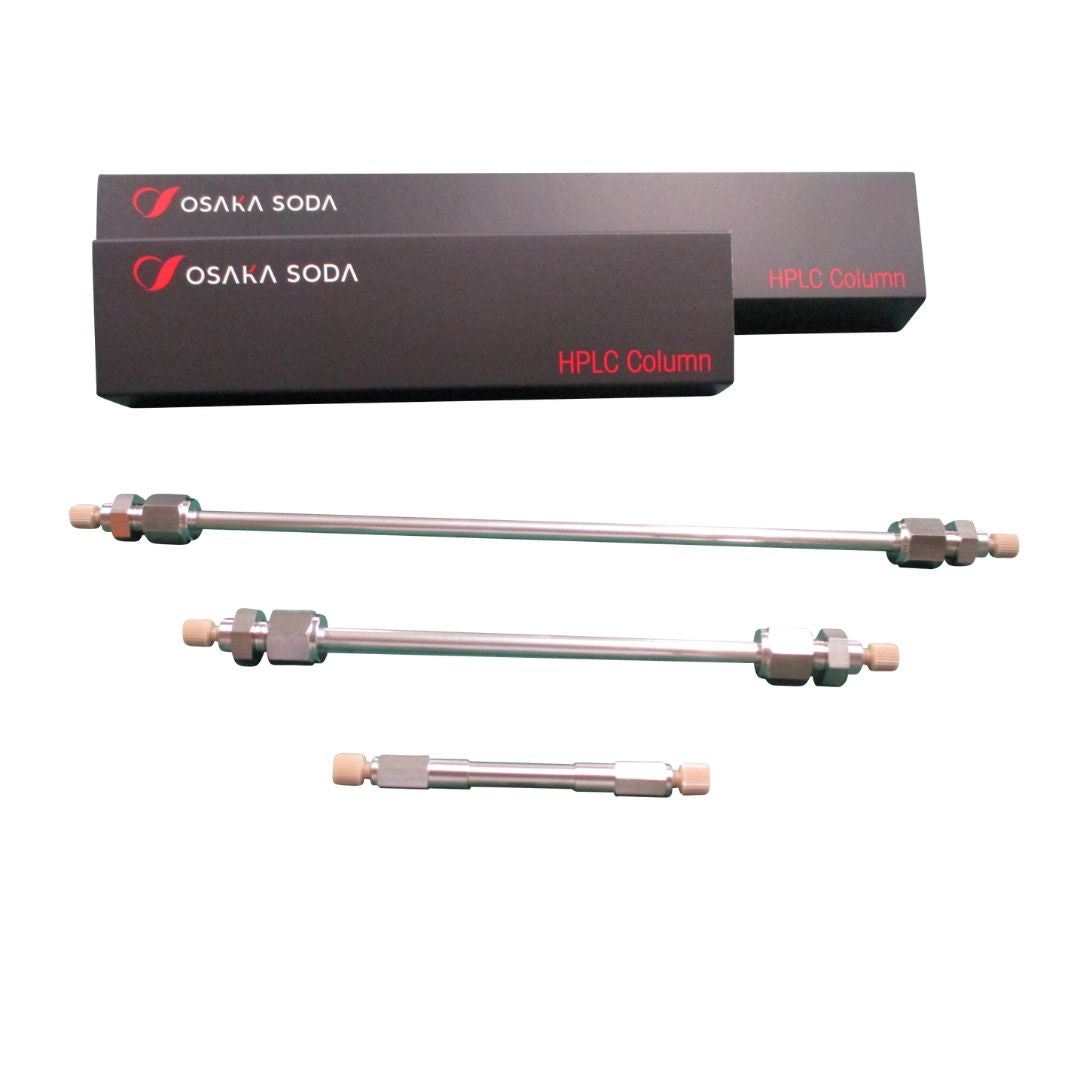Description
The MGIII series of Capcell Pak HPLC columns represents the pinnacle of 20 years of research and experimentation resulting in one of the finest reversed phase columns available. High performance liquid chromatography (HPLC) is one of the most popular techniques of analytical chemistry. The performance of the analytical system largely depends on that of columns.
The Capcell Pak MGIII column provides THE solution to the fundamental problems encountered in the analysis of basic compounds in LC/MS. Capcell Pak MGIII offers dependable reproducibility for you either working in LC/MS method development or in preparation to start a LC/MS analysis in the future.
MGIII addresses column-to-column variation and column bleeding that often causes problems in the analysis of basic compounds in LC/MS. It eliminates the cause of column-to-column variation as well as reduces column bleeding.
Moreover, with the increased surface polarity higher than that of MGII packing material, MGIII provides an extended range of application including metabolites and highly polar compounds.
With the excellent reproducibility of basic compound retention under an acidic condition, Capcell Pak C18 MGIII was developed as the most suitable column for establishing stable LC-MS methods with GLP support required by clinical trials over long periods.
Features
-
Suitable also for highly polar compounds like metabolites
Although the base silica is the same as that employed in MGII/MG, in MGIII, surface polarity has been enhanced. This extends the range of target substances for application to include highly polar compounds like metabolites.
Furthermore, MGIII will be delivered to you with the inspection certificate listed with the results of amitriptyline analysis to confirm stable reproducibility of basic compounds under acidic conditions.
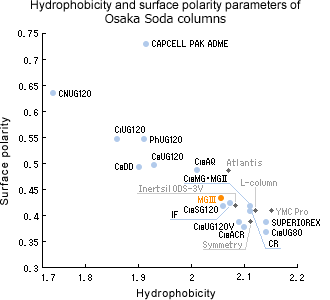
-
Stable reproducibility for basic compounds under acidic conditions
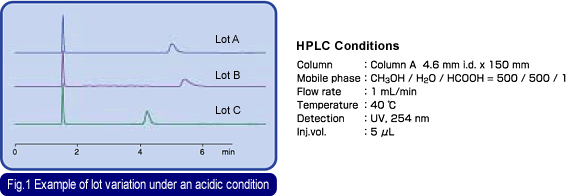
MGIII development was the result of a response to a customer comment. "In LC/MS, the analysis of basic compounds under acidic conditions is difficult" We traced the conditions explained by the customer. The mobile phase was by no means a special condition. It may have been the same mobile phase that you also have used.
Fig. 1 shows a sample analysis of amitriptyline, a strongly basic compound designated as an evaluation indicator in the USP. Measurement was carried out under isocratic conditions using a water/methanol solution with 0.1 vol % formic acid as the mobile phase. In LC/MS, analysis is often carried out under gradient conditions, and it is possible that you may not yet have noticed the phenomenon.
Actually, we recognized the difference among lots, as shown in Fig. 1. We presumed that underlying factors might have caused some phenomena other than the difference among lots, and this is where the development of MGIII got its start.
Why didn't we recognized the difference before?
We came back to our evaluation system and found that the variation of retention which had not been recognized with a neutral compound (naphthalene) was recognized with a basic compound (amitriptyline).
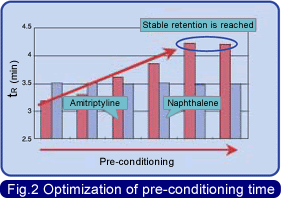
We investigated the cause of this by going back to the synthesis processes, and this resulted in the development of the column CAPCELL PAK C18 MGIII, which fundamentally eliminated these causes in the synthesis of the packing material.
In consequence, with MGIII, we were able to obtain stable retention and peak profiles, as shown in Fig. 3.
Fig 3. Verification of difference among lots with MGIII columns
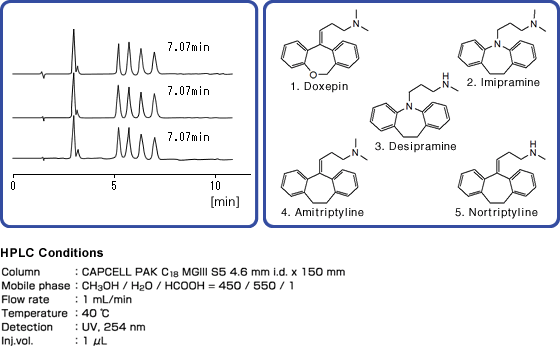
With MGIII columns we deliver stable reproducibility by documenting the results of amitriptyline analysis under acidic conditions in the performance certificate.
The cases of measurement under acidic condition are not limited to LC/MS. Indeed, they are also increasing in other areas. MGIII is the column that we recommend for establishing stable methods required for verification of clinical trials over long periods and in the GLP.
-
Standard brand in LC/MS
Another problem with the columns used in LC/MS is column bleeding. From time to time, cases are identified in LC/MS in which accurate sensitivity was not achieved because of ion suppression caused by column bleeding, particularly in the high sensitivity detection range. CAPCELL PAK C18 MGIII has reduced column bleeding. This column can be used with confidence as the standard for LC/MS procedures.
Comparisons of bleeding phenomenon (designated in-house conditions)
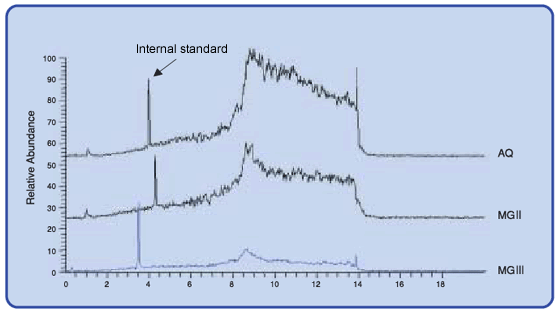
LC-MS background under designated in-house conditions is shown by TIC curves. In a comparison between different Osaka Soda columns, CAPCELL PAK C18 MGIII has succeeded in substantially reducing background (bleed phenomenon) in the high sensitivity detection range.
Effects on ionic strength of column bleeding on target substances (ion suppression)
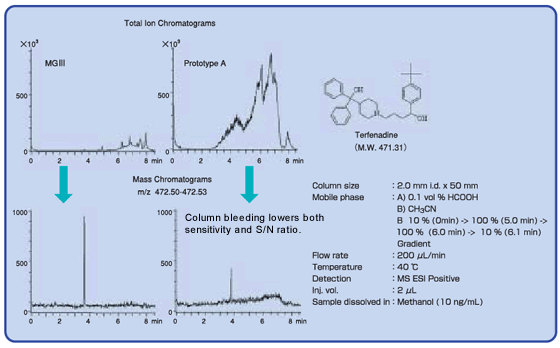
Regarding column bleeding, not only interference from constituents with similar mass/charge ratios, but adverse effects on the ionization efficiency of target constituents are suggested. In the development of MGIII, the effect on ionization efficiency was closely evaluated and reflected to products.
-
Examples of application for highly polar compounds
As MGIII columns have been designed with enhanced surface polarity of packing material, products manifest an aptitude for retention and separation of highly polar compounds in comparison with intermediate polarity columns.
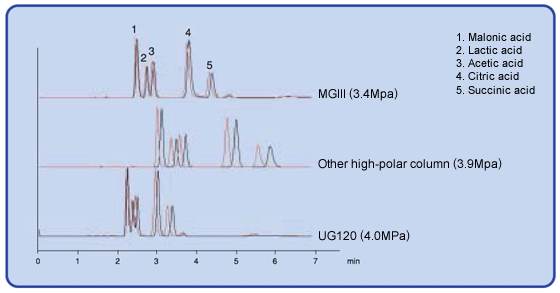

The reproducibility of different ODS columns under water-rich conditions was verified. Data were acquired for unused columns (black curves) first, and then acquired again under the similar conditions after stopping liquid flow for about 15 hours (red curves). MGIII columns achieved adequate retention and good separation for organic acids. Moreover, data acquired after stopping the liquid flow did not show the shortening of retention, demonstrating good reproducibility in the analysis of polar compounds. Regarding the UG120 column, as it is essentially advertised as a column with low polarity, it can be considered unfit for this type of analysis.
-
GLP/GMP compatible column
In addition to a test chromatogram (column report), the CAPCELL PAK C18 MGIII column(particle diameter 3 µm, 5 µm) is provided with a performance certificate as a packing material compatible with GLP/GMP requirements. The certificate also documents amitriptyline analysis data under acidic conditions.
When you intend to establish stable methods required in the verification of clinical trials over long periods and in the GLP, place an order for a set of 3 different lots. We are prepared to make a shipment of 3 lots. We provide the support to assure a reliable setup of conditions.
-
Lineup of MGIII-H columns with resistance to high pressure (50 MPa)
MGIII-H enhances resistance to high pressure up to 50 MPa, while still offering the features of MGIII. These are products we recommend for the high throughput analysis required in the most for LC/MS
Physical Properties
| Functional group |
Particle diameter (μm) |
Pore diameter (nm) |
Specific surface area (m 2/g) |
C% | Density (µmol/m 2) |
Range of acceptable pH |
USP |
|---|---|---|---|---|---|---|---|
| Octadecyl group | 3 | 10 | 300 | 15 | 2.4 | 2~10 | L1 |
| Octadecyl group | 5 | 10 | 300 | 15 | 2.4 | 2~10 | L1 |

